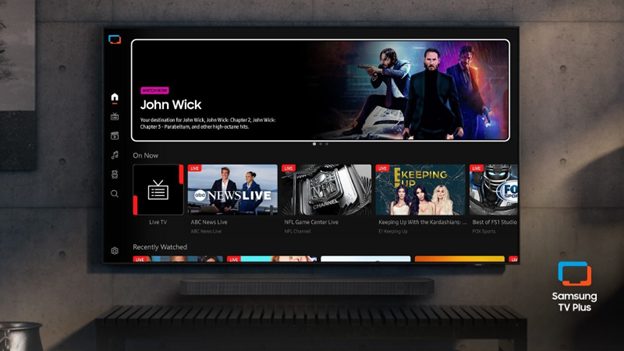Faster, Higher, Stronger and More Storage
NBC gets SAIT for Olympics
LOS ANGELES
In June, NBC extended its heritage of televised Olympic coverage when the International Olympic Committee awarded the Peacock network the U.S. broadcast rights to air the 2010 and 2012 Olympic Games.
Part of the contract included an arrangement for NBC to develop a digital TV library and archiving system valued at $10 million. The network believes the technology will be key to its coverage of the world's premiere sporting event.
Specifically, NBC will deliver high-resolution data tape that captures thousands of hours of footage as files on a robotic storage system, beginning with the 2006 games, according to Matt Adams, NBC director of technology for the Olympics.
Adams believes the biggest challenge will be future-proofing the technology.
"The standards are just coming together," he noted, musing he hoped they would be close enough to being completed so NBC doesn't "end up with an albatross."
Despite the buzz about a tapeless future, Adams insisted, "tape, for price-points, seems to beat tapeless again and again."
Moreover, Sony and Matsushita's endorsement of Super Advanced Intelligent Tape (an extension of the AIT format introduced in 1996) improved the odds for a future standard, as well as a technological milestone.
"Storage formats have not had enough capacity or throughput to store high-resolution video, much less sustain the migration to higher-resolution HD storage," Adams explained. "This is literally the only solution I'm aware of with the amount of storage capacity that an Olympics host requires."
Right now NBC is storing its footage on 50 MB Sony IMX VTR's but, said Adams, it plans to do a lot more HD by 2006.
TALKIN' TERABYTES
Today's average single-tape video cartridges easily store the equivalent of 100 gigabytes of data, and are expected to soon accommodate 200 GB. In comparison, at NAB2003, Sony demonstrated an SAIT format that can store up to 1.3 terabytes of compressed data. According to the AIT Forum, an industry consortium of hardware and software companies, by 2006 an SAIT cartridge would accommodate 1 terabyte of uncompressed data-and 10 TB by 2011.
The AIT Forum also claimed that SAIT outpaces proprietary rivals such as Quantum's DLT and Exabyte's Mammoth due to its "innovative design, superior capacity, access and retrieval speed, as well as durability."
For example, noted a white paper on the www.aittape.com Web site, wear and tear was significantly reduced because SAIT used only one-third the tension required by Mammoth. AIT Forum also claimed that SAIT had two-and-a-half times the data capacity of both Mammoth and the DLT 4000 and a 6 MBps native transfer rate (15 compressed) versus the 5 MBps (10 compressed) for the DLT 7000 and 3 MBps (6 compressed) for Exabyte's Mammoth.
In addition, it argued that SAIT enabled a media loadtime of less than 10 seconds compared to about 20 seconds for Mammoth and 40 seconds for the DLT 7000, plus an average file access time of 27 seconds versus 55 seconds for Mammoth and 60 seconds for DLT 7000.
QUALIFYING ROUND
Currently NBC is in the "Proof of Concept" stage of the project, a phase started last year at the Olympic games in Salt Lake City. The network is setting up "a small lab environment" in Stamford, Conn., to try out various solutions, according to Adams. During the last quarter of the year, Sony is slated to deliver the SAIT version of its PetaSite robot, which will be connected to Avid hardware using middleware from U.K.-based SGL (Software Generation Ltd.).
FlashNet is the product being offered by SGL for NBC's test drive at the 2004 Olympic Games in Athens, Greece.
"Our FlashNet software is fully integrated with the Avid [desktop integration] system," said Steve Atkinson, SGL's VP of Sales for the Americas. "The editors themselves can send material to and from the archives at their desktops."
"We can transfer files directly from the videotape deck to the data tape on the Sony PetaSite, without it going through a digitization process," Atkinson noted. "It's transferring them as actual files as opposed to going through a video router."
NBC is using Media Archive, a media asset management solution created by Germany's Blue Order GmbH, to interface between whatever middleware it opts for and PC users.
Per Sjofors, Blue Order's GM and VP of Sales and Marketing for the Americas, noted that Media Archive already has installations in PetaSites and rival ADIC technology, interfacing with middleware producers such as SGL, EMC Co.'s Avalon and Front Porch Digital. Meeting the requirements dictated by the size of the NBC project, he noted, is not by any means a stretch for a distributive system like Media Archive. In fact, many of NBC's requirements were already in product development unrelated to the NBC engagement.
"Instead of living on one server, Media Archive lives on a number of servers; as you add more ingest capabilities, you add more servers," Sjofors explained. "Most of this scaling can take place while the system is up in operation, with no service interruptions."
The International Olympic Committee, said Adams, is expected to connect the digital archive that NBC delivers with its own asset management system.
The professional video industry's #1 source for news, trends and product and tech information. Sign up below.
